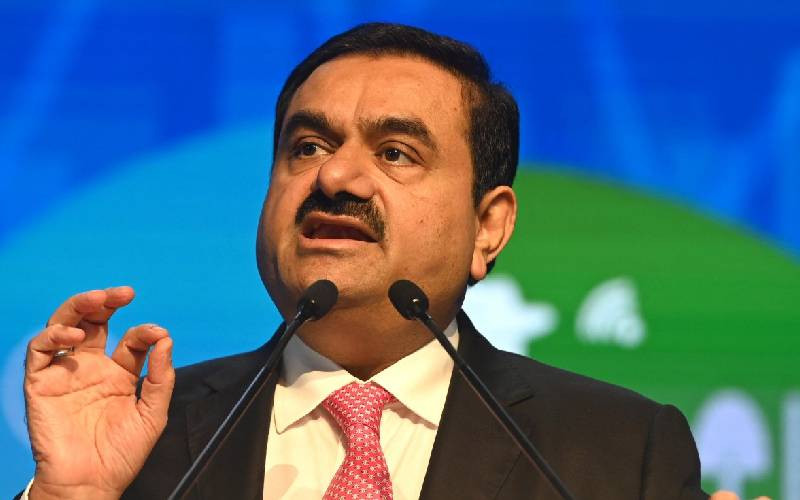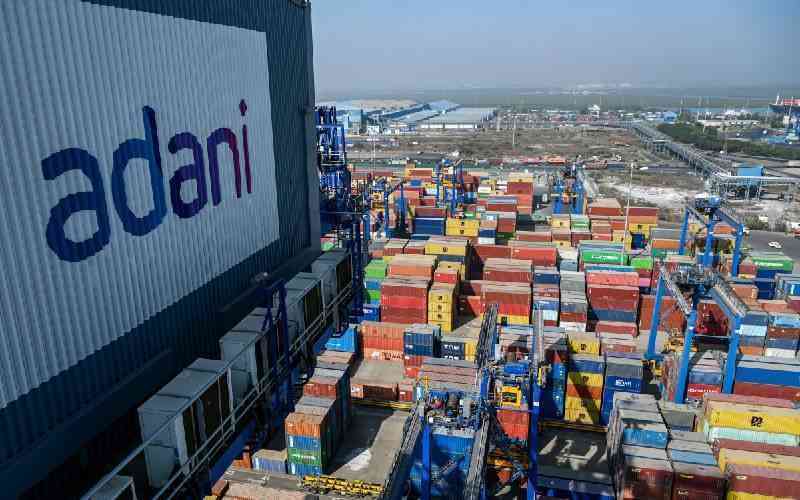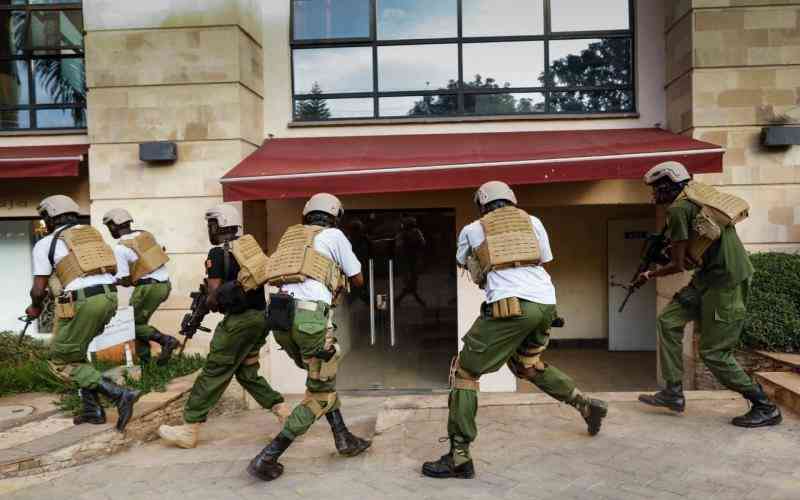By JEVANS NYABIAGE and EMMANUEL WERE
Case study: Telkom Kenya
When the government sold Telkom Kenya to the French in December 2007, the main objective was to stop the perpetual pumping of taxpayers’ money into what had evolved into an inefficient monolith. Telecom was privatised because it did not have the resources to invest in new technology. France Telecom was believed to have the solid capital resources to invest in getting the company capable of competing with nimbler, modern players.
But, six years down the line, none of the objectives for which Telkom Kenya was sold has been met. It is now a textbook case of privatisation gone awry.
France Telecom was expected to steer Telkom Kenya to profitability in three to five years in preparation for the ultimate prize: listing at the Nairobi Securities Exchange (NSE). According to the privatisation deal, the first phase would involve the offloading of 51 per cent of shares to a strategic investor — with the government retaining 49 per cent.
In the second phase, which had to take place between the second and fifth anniversary of the arrival of the strategic investor, the government would offer 19 per cent of its remaining shares to the public through an IPO. This would scale down its stake to 30 per cent. The strategic investor would also be required to reduce its stake to 40 per cent during the IPO.
The government’s stake has been cut to 30 per cent, not through an IPO as was initially anticipated, but because France Telecom has slowly diluted Treasury’s stake. The firm is bleeding red ink despite massive cash injections and sweetheart deals from the government. The fixed-line monopoly had about 18,000 employees in early 2005; it now has a workforce of about 1,500.
The government had to pay billions of shillings in preparation for the sale. The privatisation is billed as the most expensive in corporate Kenya and is estimated to have cost more than Sh120 billion in the past six years. And the operator is still in financial distress. It has been perpetually knocking on the government’s door for bailouts.
“Telkom has never recovered from being babysat by the government. When it was set free, it was too late and it found the market already taken over by others like Safaricom,” says Dr XN Iraki, a lecturer at the University of Nairobi’s School of Business.
Just a year after taking up a majority stake in the operator, France Telecom in March 2008 requested a short-term shareholder loan of Sh6.4 billion. Two-years later, France Telecom ambushed the government with a massive Sh32.9 billion demand, this time claiming they had bought an “empty shell”. They said they could not trace some of the assets that were on the books of the company at the time the transaction was signed off.
France Telecom quietly negotiated a sweetheart deal with the Treasury that offered Telkom Kenya rights over assets built by the government. The assets included the State’s 20 per cent interest in cable companies Teams Ltd and NOFBI built in 2007 to boost ICT penetration in remote zones.
The huge investment has, however, not prevented Telkom from sinking deeper into losses. Its current liabilities exceed its current assets by Sh16.5 billion.
The firm continues to lag behind in the GSM mobile network, where according to CCK data, it controls a mere 1.3 per cent of the voice traffic, even though there are immense opportunities in the fixed-line telephony market, where Telkom Kenya enjoys a monopoly.
For how long will the government pump taxpayers’ money into Telkom Kenya?
Case Study: Kenya Petroleum Refineries
Stay informed. Subscribe to our newsletter
Just like with Telkom Kenya, the entry of Essar Energy as a strategic partner to pump in money to modernise the Kenya Petroleum Refineries Ltd (KPRL), has been a total mess.
Essar Energy, which is controlled by Indian billionaire brothers Shashi and Ravi Ruia, last week made a surprise retreat and announced it is exiting the joint venture it owns with the government on a 50:50 basis.
The firm is leaving the refinery worse than it found it in 2007. Back then, when Essar acquired a 50 per cent interest in KPRL from a consortium of BP, Shell and Chevron – three foreign investors that were reluctant to pump any money into an upgrade – there was renewed hope. Essar promised to put in between $400 million and $450 million (Sh34.6 billion and Sh38.9 billion) to modernise the facility. It also promised to pay the government $11 million (Sh952.1 million) as goodwill for giving up its preemptive right to buy out its foreign partners.
But five years down the road, the promised investments have proved to be a mirage and the $11 million was slashed to miserly $2 million (Sh173.1 million) — paid two years after Essar took over the management of KPRL. This means the payment could have come from internally generated revenues. The refinery is now in tatters.
KPRL Chief Executive Officer Brij Bansal and the Chief Finance Officer Stephen Mbui say the refinery has not been in operation since September 4.
“There is nothing going on at the refinery. The company is virtually closed,” said Mbui.
Last week, Parliament’s Energy Committee accused top bosses of fleecing the taxpayer of an annual management fee of $2.2 million (Sh189 million). Essar, the KPRL bosses said, had a contract with the firm for a standing fee of Sh189 million every year for training and process audits at the refinery. According the committee, Essar’s net investment in the refinery was $3 million, but to date, Essar has already gained $4.4 million in management fees.
Documents leaked last week show that the firm had taken millions of dollars in loans to finance services at the refinery, which raises questions on whether Essar is willing to take up the liabilities seeing as it plans to quit. So far, KPRL owes Standard Chartered Bank $62.5 million, Barclays Bank $13.5 million and has an overdraft of $5 million from both the Commercial Bank of Africa and Citibank, with $7 million owed to suppliers and contractors.
“Why is Essar’s investment in the refinery done through bank loans?” asked Jamleck Kamau, the chairman of the Energy Committee.
Essar bosses said there was enough money to pay off the Standard Chartered Bank loan because they had oil worth $68 million.
Essar Energy joins a group of foreign firms that buy into public-owned assets, milk them dry and quit. Analysts say that it could be that the government does not know how to negotiate, or sales could be influenced by corruption. According to Dr Iraki, if the government does not have enough transaction analysts in its employ, it should hire them from private firms, or use consultants.
And with reports that the deep-pocketed Dangote is eyeing the refinery, the government must be more cautious going forward. Before getting into yet another doomed joint venture, there is need to ascertain where the Mombasa-based refinery fits into the East African Community bloc’s infrastructure plans over the next few years.
Case Study: Kenya Railways
Roy Puffet was a man who benefited enormously from doing business with the government. Through Sheltam, which turned out to be a shell company, he obtained the concession to run the Kenya-Uganda Railway.
Now you would think for the government to award such a project it would have done thorough due diligence and made sure the investor had both the expertise and money. But it turned out Puffet had neither the knowledge nor the financial muscle to run the 1,200 kilometre railway line over a period of 25-years.
Still, Sheltam got a 35 per cent stake in Rift Valley Railways in 2007. Three years down the line, Puffet sold Sheltam to private equity firm Citadel in a deal reported to be worth billions of shillings.
Citadel now controls 51 per cent of RVR after the exit of other investors. The investment holding firm, Transcentury, controls about 34 per cent of RVR. Interestingly, Transcentury had initially opposed Citadel taking a controlling stake in RVR. Uganda’s BomiHolding has the remaining 15 per cent stake.
The railway line as operated by RVR is laden with politics and bad economics. Kenya and Uganda see it as a lifeline in moving goods from the port of Mombasa to the interior at a cheaper cost than using roads.
But the railway line has been a cash guzzler. When Citadel took over the concession in 2010, it pumped in Sh11.2 billion to improve the infrastructure. Shareholders, however, have been forced to pump in more money to fix the railway line — like the curves on the line that cost about Sh1.7 billion. They have also had to repair the wagons, which are so dilapidated that 40 wagons are rehabilitated every month.
Even though RVR says it has been doing the best it can, it has not been reading from the same script with the government in terms of performance.
The amount of cargo transported by rail has gone down five times in the seven years since the concession was awarded. Currently, RVR handles 1.5 million tonnes of cargo, though it hopes to handle five million tonnes by 2015.
RVR has been falling badly behind on its targets in terms of the amount of cargo carried, according to the government. RVR maintains that its target is to haul cargo measured by the distance carried and not just the amount of cargo.
With the regional governments not keen to break up the concession, which would require that they pay RVR a princely amount of money, the option has been to build a parallel railway line. The Sh1.2 trillion Standard Gauge Railway project involves the development of a parallel high-capacity line for passengers and freight that has the capability of attaining initial speeds of 180kph and 120kph, respectively. It will be overseen by the Kenya Railways Corporation.
Kenya and Uganda have signed a revised bilateral agreement, along with Rwanda, that has seen them mobilise funding for the project to speed up its implementation and increase its viability. This new high-speed line will also link the port of Mombasa to the border town of Kisangani, located between Rwanda and the Democratic Republic of Congo. The other big gainers in the SGR project will be northern Tanzania, Burundi, Eastern DRC, South Sudan and Ethiopia, who all depend on the Mombasa Port as their only viable route to the sea.
Case Study: Essar Energy
Turnaround strategies can become messy with no light at the end of the tunnel. That is the story of Pan African Paper Mills, which at its peak was the largest pulp and paper maker in the region.
Its receiver manager, Ian Smith, has been there before, and failed. In August he was re-appointed again. Will he be second time lucky, or will Pan Paper now go over the cliff?
When Industrialisation Cabinet Secretary Adan Mohammed announced Smith’s reappointment as receiver manager, he said the government is looking to revive Pan Paper under its Vision 2030 plan.
But is there any need to flog a dead horse?
In media reports, Bungoma Governor Ken Lusaka has said a strategic investor should be on board this month. But whoever this is is likely to be a good negotiator, which means the government might sell its stake cheap.
Although the government says it will protect the company by ensuring easier acquisition of logs, which are used to make paper, industries in this sector have moved on from wood. Alternative raw materials like bargasse — a by product of sugar refining — wheat and rice straws are now the most important sources for paper manufacturers.
Pan Paper’s woes started mounting in the early 2000s when its operating profits were not enough to cover even the interest on its loans.
It is estimated that energy costs alone, including electricity, diesel and biomass, took up 33 per cent of the company’s total operating costs. These costs went up because of the high cost of electricity and wood, while outdated technology compounded inefficiencies.
In January 2009, Pan Paper had no option but to close its doors when managers from Birla Group — which had a 54.4 per cent stake — abandoned the factory over debts.The government held a 42 per cent stake while the World Bank’s International Finance Corporation held 3.6 per cent.
What happened next was that the government was forced to negotiate with the long and short-term creditors. They included IFC, Deutsche Bank, PTA Bank and the East Africa Development Bank. Other creditors were Kenya Commercial Bank, Development Bank of Kenya and Proparco.
The government paid creditors about Sh1.2 billion, less than the Sh3 billion they sought in 2010, in the hopes of reviving the manufacturer. In one settlement, the government agreed to pay out Sh400 million and all tax refunds, tax claims and other receivables due and payable to Pan Paper by the Kenya Revenue Authority.
Yet this amount still remains a drop in the ocean. Short-term creditors — Eco Bank, Barclays Bank and Bank of Baroda — got the better deal, demanding a lot from the government as they got the right to the assets such as the paper, tax credits and refunds. Long-term creditors held claim over assets such as land and equipment.
Pan Paper’s current debts are estimated at Sh5billion
The factory employed more than 1,300 people on a permanent basis and an additional 3,000 as casual workers. Webuye town lost an important industry, which was the bedrock of economic activity, not just in the town but the region.
With the collapse of Pan Paper, there has been an opportunity for private investors to take advantage of growing stationery and packaging needs in offices and industries.
 The Standard Group Plc is a
multi-media organization with investments in media platforms spanning newspaper
print operations, television, radio broadcasting, digital and online services. The
Standard Group is recognized as a leading multi-media house in Kenya with a key
influence in matters of national and international interest.
The Standard Group Plc is a
multi-media organization with investments in media platforms spanning newspaper
print operations, television, radio broadcasting, digital and online services. The
Standard Group is recognized as a leading multi-media house in Kenya with a key
influence in matters of national and international interest.
 The Standard Group Plc is a
multi-media organization with investments in media platforms spanning newspaper
print operations, television, radio broadcasting, digital and online services. The
Standard Group is recognized as a leading multi-media house in Kenya with a key
influence in matters of national and international interest.
The Standard Group Plc is a
multi-media organization with investments in media platforms spanning newspaper
print operations, television, radio broadcasting, digital and online services. The
Standard Group is recognized as a leading multi-media house in Kenya with a key
influence in matters of national and international interest.










